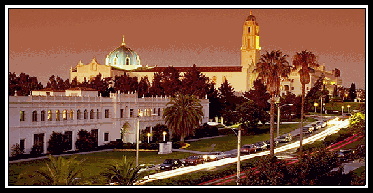
URBAN ECONOMICS
 |
| Spring 2003 |
 |
Economics 104 URBAN ECONOMICS |
|
|
|
| | HOME | SYLLABUS | CALENDAR | ASSIGNMENTS | ABOUT PROF. GIN | |
Extra Credit OpportunitiesPlay the game SimCity, SimCity 2000, SimCity 3000, or SimCity 4 until you develop a city with a population of 25,000. Submit a typed report of up to two pages discussing the development of your city, along with the file representing your city. Address the following questions: a. How does the land use pattern in your city compare to the discussion of land use in a monocentric city discussed in Chapter 8? b. Does your city have suburban subcenters as discussed in Chapter 9? c. How does the land value vary with distance from the center of the city (CBD)? Does this coincide with the discussion of bid-rent functions in Chapter 8? d. How does the game use supply and demand for the different land uses at different times of the game to represent the difference between export and local employment as discussed in Chapter 6? e. How does the game represent the impact of industrial nuisances as discussed in Chapter 10? You can play the Classic version of SimCity for free on the Internet by going to the following site: Instructions This extra credit assignment asks you to examine the hierarchy of shopping centers in San Diego County. You should visit one of each type of shopping center and follow the directions and answer the questions below:
Indicate the location of each center (by cross streets) and its name if it has one. Limitations 1. Do not use the centers discussed in class. 2. The convenience center must have more than one store. 3. Each convenience center can be used by only one person. 4. Each neighborhood center can be used by a maximum of two people. 5. Each community center can be used by a maximum of four people. 6. Each regional center can be used by a maximum of six people. |